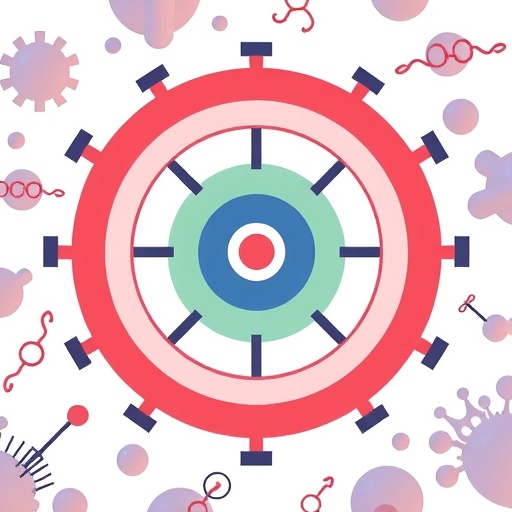In a groundbreaking study published in the Journal of Perinatology on November 25, 2025, researchers have shed new light on the complex landscape of neonatal outcomes following antenatal medication for opioid use disorder (OUD). As the opioid epidemic continues to ravage communities worldwide, understanding how gestational exposures to these medications affect newborns is more urgent than ever. This comprehensive investigation meticulously examines both the immediate and extended neonatal consequences of pharmacological interventions used during pregnancy, providing critical insights that could shape future clinical guidelines and public health policies.
Opioid use disorder poses significant challenges for pregnant women and their healthcare providers alike. The administration of medications such as methadone, buprenorphine, or other opioid agonist therapies during pregnancy is a well-established strategy to mitigate withdrawal symptoms and reduce illicit opioid use. However, the neonatal implications of these treatments are multifaceted, involving a delicate balance between maternal stabilization and fetal well-being. The study scrutinizes the interplay between these pharmacotherapies and neonatal health, including the often-encountered neonatal opioid withdrawal syndrome (NOWS), which remains a pressing concern.
The investigators deployed a robust cohort analysis, enrolling a diverse population of pregnant individuals undergoing antenatal opioid pharmacotherapy. Their systematic approach involved longitudinal monitoring of neonatal parameters, encompassing birth weights, gestational age at delivery, rates of preterm birth, and the severity and duration of NOWS. This multifactorial assessment was complemented by neurodevelopmental follow-ups, offering a rare glimpse into longer-term outcomes that have historically been underreported in the literature.
One particularly compelling revelation from the study was the nuanced variations observed between different medication regimens. Methadone and buprenorphine, while both classified as opioid agonists, demonstrated divergent neonatal profiles. The data suggested that buprenorphine exposure was associated with a lower incidence and reduced severity of NOWS compared to methadone. This finding aligns with emerging evidence but also raises critical questions regarding the pharmacokinetic and pharmacodynamic mechanisms underlying these disparities.
The authors delved deeply into the pharmacological properties of these medications, noting that buprenorphine’s partial agonist activity and ceiling effect on respiratory depression might confer neuroprotective advantages in utero. In contrast, methadone’s full agonist profile, alongside its longer half-life, could contribute to the heightened withdrawal symptomatology observed in exposed neonates. These insights open new avenues for targeted pharmacotherapy refinements, aiming to optimize fetal neurodevelopmental trajectories while maintaining effective maternal OUD management.
Apart from pharmacodynamics, the study also evaluated maternal factors influencing neonatal outcomes, such as co-morbidities, polysubstance use, socioeconomic determinants, and prenatal care adequacy. The researchers employed multivariate regression models to disentangle the contributions of these confounders, underscoring the necessity of holistic approaches in both research and clinical practice. Their findings advocate for integrated care models that combine medication-assisted treatment with comprehensive social and behavioral support.
In a striking attempt to move beyond neonatal abstinence syndrome alone, the study probed into neurobehavioral markers using advanced neuroimaging and electrophysiological techniques in a subset of infants. These assessments revealed subtle alterations in cortical maturation and autonomic regulation that might presage later neurodevelopmental challenges. The clinical significance of these early alterations remains an ongoing area of research, but the authors emphasize the potential utility of early diagnostic biomarkers to guide individualized intervention planning.
The implications of these findings ripple far beyond the immediate neonatal period. Future childhood cognitive, behavioral, and emotional development could be influenced by the intricate fetal exposures described. This underscores a pressing need for longitudinal surveillance and early therapeutic interventions to mitigate potential impairments. Moreover, healthcare systems must grapple with the resource allocation required for sustained follow-up and support for this vulnerable population.
Ethical considerations punctuate the study’s discourse, emphasizing the importance of informed consent and non-stigmatizing care environments. The delicate task of balancing maternal autonomy, fetal safety, and societal impact requires concerted efforts across clinicians, researchers, policymakers, and patient advocacy groups. This publication advocates for destigmatizing OUD treatment in pregnancy through education and policy reform, aiming to foster better engagement and outcomes.
The timing of medication administration emerged as another critical factor; for instance, initiating pharmacotherapy earlier in pregnancy correlated with more favorable neonatal metrics. This temporal dimension hints at underlying developmental windows of vulnerability and resilience, suggesting that proactive screening and timely therapeutic intervention could enhance neonatal prognosis. Additional research into optimal initiation periods and dosing strategies promises to refine antenatal care protocols further.
Gender-specific analyses offered intriguing insights, revealing differential susceptibilities and outcomes between male and female neonates exposed to opioids in utero. These differences likely reflect a complex interplay of genetic, hormonal, and epigenetic influences, inviting a deeper exploration into sex-specific neurodevelopmental trajectories. Personalized medicine principles could eventually inform sex-tailored interventions within this domain.
The research also examined the role of breastfeeding in mediating neonatal withdrawal symptoms and broader developmental outcomes. Contrary to previous apprehensions, breastfeeding was generally associated with milder NOWS manifestations and enhanced mother-infant bonding, underscoring the protective effects of human milk even amid ongoing opioid therapy. This supports current clinical recommendations encouraging breastfeeding among appropriately supported mothers receiving OUD treatment.
Pharmacovigilance emerged as a thematic cornerstone, highlighting the necessity for ongoing drug safety monitoring in pregnant populations. The study underscores gaps in pharmacokinetic data for emerging or off-label medications used in this field, calling for rigorous post-marketing studies and surveillance networks. Establishing comprehensive registries and biobanks could accelerate knowledge generation and clinical translation.
Finally, this seminal investigation challenges prevailing paradigms and calls for multidisciplinary collaborations to address the multifaceted nature of opioid exposure during pregnancy. The intricate weaving of pharmacological, psychosocial, developmental, and ethical threads demands a unified approach, combining cutting-edge science with compassionate care delivery. The ultimate goal is to safeguard the next generation from the enduring shadows cast by the opioid epidemic while supporting maternal health and dignity.
The study authored by Benninger, Nadler, Pothrai, and colleagues signifies a crucial leap forward in perinatal opioid research, encapsulating the complexities of antenatal medication and neonatal outcomes with unprecedented depth. Its findings will undoubtedly resonate across neonatology, addiction medicine, obstetrics, and public health, heralding a new era of evidence-based interventions aimed at transforming the narratives of countless families affected by opioid use disorder.
Subject of Research: Neonatal outcomes after antenatal medication for opioid use disorder
Article Title: Neonatal outcomes after antenatal medication for opioid use disorder
Article References:
Benninger, K.L., Nadler, R., Pothrai, S. et al. Neonatal outcomes after antenatal medication for opioid use disorder. J Perinatol (2025). https://doi.org/10.1038/s41372-025-02500-0
Image Credits: AI Generated
DOI: 10.1038/s41372-025-02500-0
Tags: antenatal opioid medication effectschallenges in managing pregnant women with OUDcomprehensive analysis of neonatal health parametersJournal of Perinatology neonatal studylong-term effects of antenatal drug exposurematernal stabilization and fetal healthneonatal opioid withdrawal syndrome researchneonatal outcomes following opioid useopioid agonist therapies during pregnancyopioid use disorder in pregnancypharmacological interventions in pregnancypublic health implications of opioid medication





